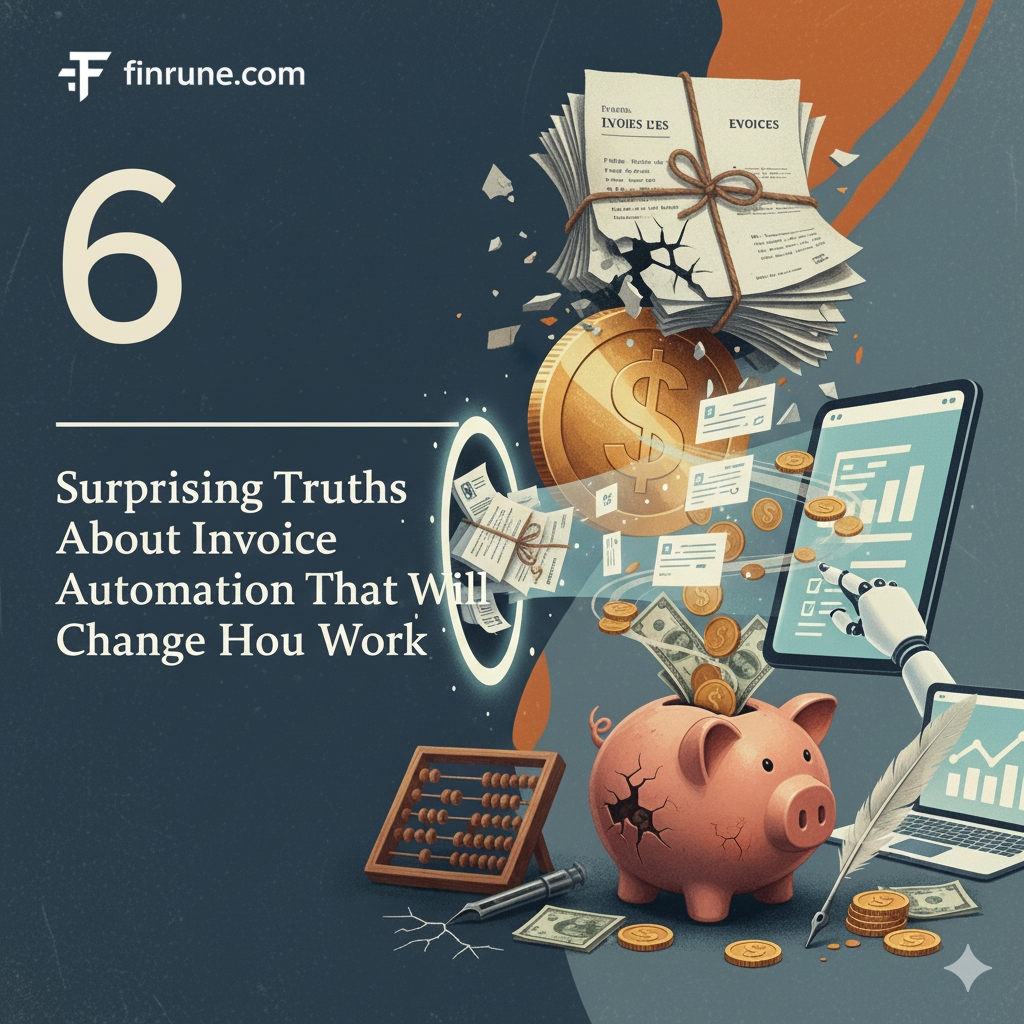Manual invoice processing is a universal business headache. The tedious data entry, the endless follow-ups, and the constant risk of costly errors can drain an organization’s most valuable resources: time and focus. The obvious solution is automation. But while most people associate automation with simply doing things faster, the most impactful truths about it are often surprising and go far beyond simple time savings.
This article uncovers the real story behind Accounts Payable (AP) automation. Forget what you think you know. These six eye-opening takeaways reveal how automation fundamentally reshapes how teams work, where the real costs are hidden, and why the biggest challenges have nothing to do with technology.
1. Your Team Isn’t Just Processing Invoices—They’re Drowning in Exceptions.
The common perception of Accounts Payable work is a mountain of manual data entry. The surprising reality is that this isn’t where your team’s time actually goes. AP departments spend the overwhelming majority of their effort handling invoice exceptions, not routine processing.
“accounts payable departments spend nearly 62% of their time handling exceptions rather than value-added activities.”
An invoice exception is any invoice that fails validation and cannot be processed automatically. This includes everything from price mismatches and missing purchase order numbers to incorrect tax amounts and approval routing problems. In a manual environment, exception rates can run as high as 25-30%, meaning nearly one in every four invoices requires time-consuming manual intervention. Automation’s primary value, therefore, isn’t just making routine tasks faster; it’s about drastically reducing the volume of this costly, non-value-added work that currently consumes your team.
2. The Biggest Barriers to Automation Aren’t Technical; They’re Human.
Many businesses assume the hardest part of implementing automation is the technology itself—complex integrations, vendor onboarding, or technical glitches. The counter-intuitive truth is that the main obstacles are often internal and human-centric. The two most significant challenges are “Poorly documented policies” and “Internal resistance to adoption.”
Many growing businesses lack formalized or documented processes for procurement and accounts payable. The routines that worked for a small team begin to break down at scale, making it nearly impossible to configure an automation system to follow rules that have never been formally defined. Furthermore, employees may resist change due to fears of disrupting established vendor relationships or concerns about the effort required for implementation. Successful automation isn’t just about buying software; it’s about launching a strong change management program, securing stakeholder buy-in, and fixing broken internal processes before the technology is put in place.
3. The True Cost of Manual Invoicing Is Shockingly High.
For many organizations, manual invoice processing seems “free” aside from staff salaries. This perception masks a significant operational cost. The reality is that manual invoice processing typically costs between $6 to 15 per invoice** when factoring in labor and overhead. In contrast, automated systems can slash that cost to as low as **2 to $5 per invoice.
This is not a minor saving. As invoice volume grows, the cost difference has a substantial impact on the bottom line. Compounding the issue is the sheer amount of time invested; over half of all AP staff spend 10 hours or more each week just processing invoices. This data reframes automation from a mere convenience into a critical cost-control strategy for any scaling business.
4. That “Free” Invoicing Software Isn’t Really Free.
Small businesses are increasingly turning to free invoicing software, which seems like a perfect, no-cost solution. However, there’s a hidden catch: while the software for creating and sending invoices may be free, accepting online payments is not. All online payments are handled by third-party payment gateways that charge unavoidable transaction and processing fees.
These fees are automatically deducted from every payment you receive. For example:
- PayPal: 2.99% + $0.49 per transaction for debit and credit card payments; 3.49% + $0.49 per transaction for PayPal and Venmo
- Square: 3.3% + $0.30 per transaction for invoice payments
This is a crucial detail for any business owner. These fees directly impact profitability and must be factored into cash flow planning and pricing strategies. Ultimately, ‘free’ software isn’t a cost-saving tool if it erodes the profit margin on every single transaction.
5. Automation Isn’t Just for Giants—It’s a Small Business’s Secret Weapon.
A powerful misconception persists that sophisticated automation is a luxury reserved for large enterprises with massive IT budgets and dedicated implementation teams. The modern reality is that automation technology has become highly accessible, acting as a “great equaliser” that empowers small and mid-sized businesses (SMEs) to operate with the efficiency of their larger competitors.
“88% of small business owners say automation allows their company to compete with larger enterprises by helping them move faster and reduce errors.”
This shift is driven by the availability of robust and affordable cloud-based tools. Platforms like Zoho Invoice and Wave offer powerful features—once considered enterprise-level—entirely for free, giving small businesses the ability to streamline operations, reduce errors, and scale confidently without significant upfront investment.
6. The Technology Is Smarter Than You Think (And It’s Still Learning).
Basic automation is often misunderstood as simple document scanning. Modern AP systems, however, are powered by a combination of advanced technologies, including Optical Character Recognition (OCR), Artificial Intelligence (AI), and Machine Learning (ML).
The most surprising aspect of this technology is that it isn’t static. Modern systems are designed to learn and improve. Machine learning algorithms analyze corrections made by users during the review process, allowing the software to become more accurate over time at recognizing different invoice formats and extracting data correctly. Beyond data capture, AI can also be used to automatically identify discrepancies, flag potentially fraudulent invoices, and even predict future exceptions before they occur. This transforms automation from a simple tool into a dynamic, self-improving asset that delivers increasing value to the business.
Conclusion
The true story of AP automation is far more nuanced than simply saving time. It’s about fundamentally changing how teams work by shifting their focus from tedious exceptions to value-added analysis. It’s about understanding the hidden costs of “free” tools and manual processes. Most importantly, it’s about empowering businesses of all sizes with intelligent, learning systems that were once out of reach.
Your biggest AP problem might not be what you think it is. What’s one repetitive task you could investigate automating this week?












